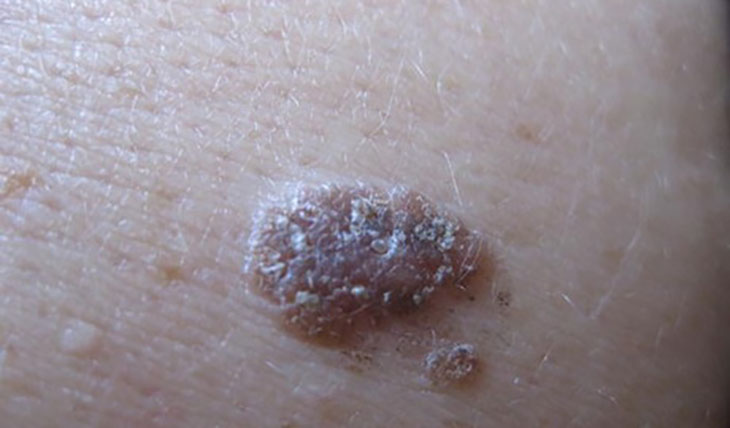8. Roughly-Textured Moles

Examine the mole’s surface: has it broken down at all? Is it scratched or scaly? Is it brittle or lumpy? Is it flaky? Is your mole high and characterized with a central depression? All of these things might be signs of skin cancer .It’s a good idea to pay attention to skin texture changes even before you notice any mole changes. The reason for this is that precancerous skin growths (actinic keratoses) begin as rough patches or scaly pimples on sun-exposed areas of the body. Changes in the form, texture, or height of moles may also be indicators of danger. Melanoma can be detected by an asymmetric mole with uneven margins. It might be bumpy and/or rough to the touch, or it could be a firm lump. The growth does not have to be large for it to be harmful. Normal moles and freckles are smooth and do not feel rough or bumpy when you run your finger over your skin. Skin cancers, on the other hand, are frequently elevated (although, just because it’s raised doesn’t indicate it’s an indication of skin cancer!).
Detecting possible skin cancer is difficult, and not all melanomas adhere to the standards. Melanomas can take numerous forms and may not exhibit any of the normal warning symptoms. It’s also worth noting that 20 to 30 percent of melanomas form in pre-existing moles, whereas 70 to 80 percent form on seemingly normal skin. One of the important characteristics that dermatologists look for in malignant moles is change. Melanoma can be detected by crusting or scabbing. A scabbing mole is especially concerning if it bleeds or is uncomfortable. Other changes, such as size, shape, color, or itching, might also occur. Melanomas can scab because malignant cells alter the structure and function of normally healthy cells. Skin cells can respond in a variety of ways, ranging from color changes to alterations that result in a crusting or scabbing texture.



